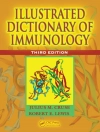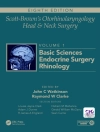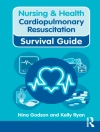There has been an explosion of interest in esophageal High Resolution Manometry (HRM). Today, less than 15 years after publication of the first paper describing this technology, there are now more than 1300 HRM systems in use worldwide.
This manual is designed for use by physicians, surgeons and physiologists that use HRM for clinical measurement of esophageal function. Contents are divided into four sections including:
– Practical instructions including step-by-step instructions for the acquisition and analysis of HRM
– A primer on esophageal physiology and motility disorders
– A practical guide to HRM technology and application in clinical practice
– An atlas including step-by-step guide to the acquisition and analysis of HRM studies and more than 100 examples of clinical findings demonstrating the ‘range of normal and abnormal findings’ observed during HRM studies
The editors are grateful to all those members of the HRM Working Group that contributed to this manual to share their knowledge and experience gained from the first ten years of work with this exciting new technology.
Inhoudsopgave
1.Introduction16
1.1.Esophageal Structure and Function16
1.1.1.Anatomy16
1.1.1.1.Anatomical Structures16
1.1.1.2.Innervations17
1.1.1.3.Blood Supply18
1.1.2.Physiology18
1.1.2.1.Physiology of Swallowing18
1.1.2.2.Swallow Pattern Generator19
1.1.2.3.Deglutitive Inhibition19
1.1.2.4.Signals Involved in Swallowing19
1.1.2.5.Phases of Swallowing19
1.1.2.6.The Gastro-Esophageal Junction21
1.1.2.7.Transient Lower Esophageal Sphincter Relaxation (TLESR)21
1.2.Clinical Assessment of Esophageal Symptoms22
1.2.1.Heartburn and Regurgitation23
1.2.2.Dysphagia24
1.2.3.Chest Pain25
1.2.4.Rumination and Belching25
2.High Resolution Manometry28
2.1.Technical Aspects28
2.2.Conventional and High Resolution Manometry31
2.2.1.Concept and Development of HRM31
2.2.2.Gains over Conventional Manometry32
2.2.2.1.Anatomic and Technical Gains32
2.2.2.2.Assessment of LES Function33
2.2.2.3.Esophageal Body Contraction Segments35
2.2.2.4.Learner Preference35
2.3.High Resolution Impedance-Manometry37
2.3.1.Equipment37
2.3.2.Performing HRi M Testing38
2.3.3.Displaying, Analyzing and Interpreting HRi M Recordings38
2.3.4.Added Value of Impedance to HRM Recordings40
2.4.Study Procedure, Data Analysis and Normal Values43
2.4.1.Water Swallows43
2.4.1.1.Manometry Protocol43
2.4.1.2.Data Analysis46
2.4.1.3.Normal Values47
2.4.2.Multiple Liquid Swallows and Solids50
2.4.3.Pharyngeal Studies61
2.4.4.Pediatric Studies64
2.4.4.1.Manometric Assemblies64
2.4.4.2.Study Protocol64
2.4.4.3.Data Analysis and Normal Values65
2.5.Chicago Classification of Esophageal Motility Disorders68
2.5.1.Clinical HRM Study68
2.5.2.EPT-Specific Metrics68
2.5.3.Applying EPT Metrics to Score Individual Swallows71
2.5.4.Applying the Chicago Classification of Esophageal Motility72
3.Diagnosis and Management of Patients with Esophageal Disease78
3.1.Diagnosis of pharyngeal and UES dysphagia using HRM78
3.1.1.HRM to Identify the Pharyngeal and UES Anatomy78
3.1.2.HRM to Identify Pharyngeal and UES Physiology78
3.1.3.Objective Measurement of Swallow Physiology with HRM79
3.1.3.1.Pharyngeal Function79
3.1.3.2.Upper Esophageal Sphincter Compliance79
3.1.3.3.Pharyngeal Response to UES Function80
3.1.4.Deglutition Characterized Using HRM81
3.1.4.1.Pharyngeal Peristalsis82
3.1.4.2.Cricopharyngeal (UES) Dysfunction83
3.2.Achalasia88
3.2.1.Diagnosis88
3.2.2.Treatment88
3.2.2.1.Drugs89
3.2.2.2.Pneumatic Dilation89
3.2.2.3.Laparoscopic Heller Myotomy (LHM)90
3.2.2.4.Peroral Endoscopic Myotomy (POEM)90
3.2.2.5.Choice of Treatment90
3.2.3.Long Term Follow-Up91
3.3.Esophageal and EGJ Outflow Obstruction92
3.3.1.Pharyngeal Obstruction93
3.3.1.1.Presentation and Initial Investigation93
3.3.1.2.HRM Method and Diagnosis94
3.3.2.Esophageal and EGJ Obstruction94
3.3.2.1.Presentation and Initial Investigation94
3.3.2.2.HRM Method and Diagnosis96
3.3.2.3.Differential Diagnosis and Management96
3.3.2.4.Surgery96
3.4.Hypertensive Peristaltic Disorders98
3.4.1.HRM and EPT99
3.4.1.1.Integrated Relaxation Pressure (IRP)99
3.4.1.2.Distal Contractile Integral (DCI)99
3.4.1.3.Measurements of Propagation99
3.4.2.Diagnosis of Disorders of Increased Contractility99
3.4.2.1.Conventional Manometric Classification of Disorders of Increased Contractility101
3.4.2.2.EPT Classification of Disorders of Increased Contractility102
3.4.3.Disorders of Rapid Propagation102
3.4.3.1.Conventional Manometric Classification of Disorders of Rapid Propagation102
3.4.3.2.EPT Classification of Disorders of Rapid Propagation103
3.5.Weak Peristalsis and Functional Dysphagia106
3.5.1.Epidemiology106
3.5.2.Pathogenesis106
3.5.3.Diagnostic Work-up106
3.5.4.Manometric Assessment of Peristaltic Integrity107
3.5.4.1.Classification of Individual Swallows107
3.5.4.2.Chicago Classification of Peristaltic Integrity Abnormalities109
3.5.5.Management of Patients with Peristaltic Integrity Abnormalities109
3.5.6.Functional Dysphagia110
3.6.Gastro-Esophageal Reflux Disease (GERD)111
3.6.1.Length of the LES and Resting Pressure111
3.6.2.EGJ Morphology and Hiatal Hernia111
3.6.3.Transient Lower Esophageal Sphincter Relaxations112
3.6.4.Esophageal Dysmotility113
3.6.5.Antireflux Surgery114
4.Atlas118
4.1.Acquisition118
4.2.Analysis124
4.3.EGJ Classification131
4.4.Chicago Classification of Esophageal Motility Disorders134
4.4.1.EGJ Dysfunction: Achalasia134
4.4.2.EGJ Dysfunction: Outlet Obstruction142
4.4.3.Peristaltic Disorders: Absent Peristalsis147
4.4.4.Peristaltic Disorder: Distal Esophageal Spasm148
4.4.5.Peristaltic Disorder: Hypercontractile Esophagus151
4.4.6.Abnormal Motility: "Nutcracker" esophagus153
4.4.7.Abnormal Motility: Hypotensive Dysmotility / Weak Peristalsis153
4.4.8.Abnormal Motility: Rapid Contractions156
4.5.Postprandial Observations: Reflux, Rumination, Belching157
4.6.Pharyngeal Motility: Normal and Abnormal164
5.Glossary168
Index170












